6 Exercises To Loosen Tight Hips

Having tight hips is a very common problem in runners. Tightness in or around your hips is usual if you have just started running or recently added on mileage.
Tight hip flexors can keep you from enjoying your run and can negatively affect the quality of your workout, limiting your range of motion.
This is why learning how to release tight hips is so important.
What Causes Extremely Tight Hips?
Unlike some other athletes, runners move only in a forward motion. This means that your muscles are only working in one direction because they are used repeatedly in the same way. To help prevent tight hips, you need to exercise and move those muscles in other ways and directions.
Another cause of tight hips in runners is when you overcompensate because of having weaknesses in other parts of the body.
Weakness in your core or glutes can cause problems in other areas, such as your hips. It is quite common for weak muscles on one part of your body to cause difficulties elsewhere.
You also need to give your body adequate time for rest and recovery if you want it to operate properly for you. If you keep continually pounding the pavement without taking time off, this is another reason your hips might start to bother you.
Common Symptoms of Tight Hip Flexors
Symptoms include:
- Tightness in hips and lower body
- Stiffness in hips
- Lower back pain
- Neck tightness or pain
- Pain in the glutes
- Difficulty when stretching
- Poor posture or difficulty standing straight
How Can I Loosen My Hips?
There are many ways to release tightness in your hips.
These tactics include stretches, foam rolling, and dynamic warm-up movements.
1. Bouncing Lunges
- Stand upright with your feet about shoulder-width apart. Lunge your right foot forward and slide your left foot back as far as possible.
- Keeping your core tight and your back straight, gently raise and lower your hips to gradually deepen the stretch for eight counts.
- Switch legs and repeat.
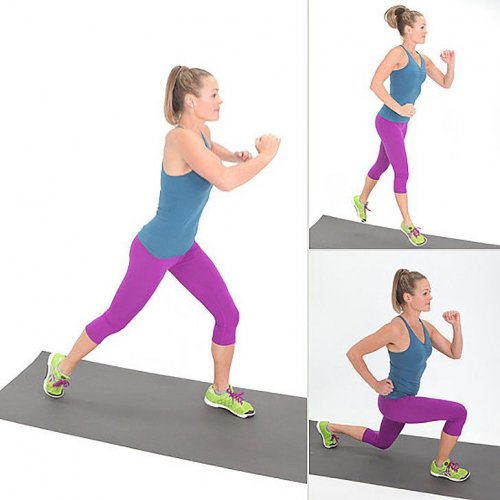
2. Chair Pose Squats
- Stand upright with your feet shoulder-width apart. Balancing on your left foot, bend your right knee.
- Place your right ankle on your left thigh while sinking back into a squat. Keep your back straight.
- Interlace your finger and stretch your arms forward, palms facing away from you.
- Slowly straighten your left leg to return to standing.
- Repeat the entire movement for four reps and then switch legs.
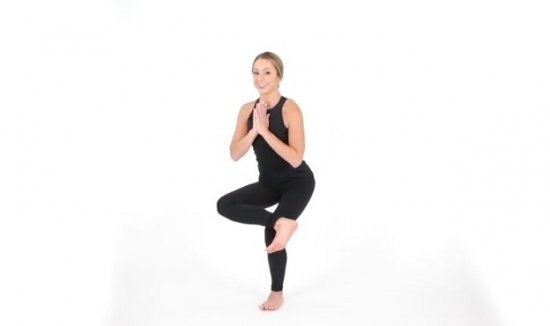
3. Toy Soldiers
- Stand upright with your feet shoulder-width apart.
- Keeping your core tight and your back straight, swing your right arm behind you and then bring up around for a full arm circle.
- At the same time, kick your left leg up as high as you can so that your left toes and right fingers touch.
- Alternate limbs for a total of 12 reps.
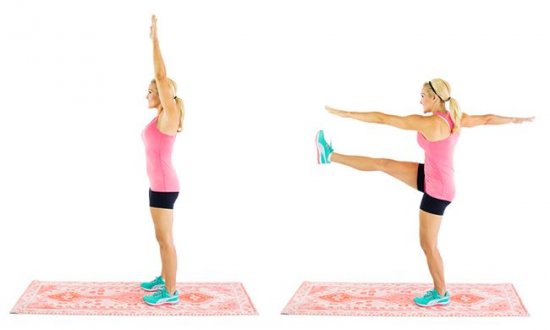
4. Rolling Figure Four
- Sit on the roller and reach behind you with your left arm.
- Plant the left hand on the floor behind you.
- Cross the left ankle over the right knee, making the figure four.
- Shift weight onto that left hip and glute area.
- Roll back and forth, putting pressure onto that area for roughly 30 seconds.
- Take a break, then repeat.
- Switch sides.

5. Goddess Roll
- Lie on your stomach on the floor or mat, and prop up on your forearms.
- Put the roller under your hips, keeping your knees side, and feet together.
- Engage your core muscles.
- Roll your body forward, so the roller moves down to about your knees, then roll back up.
- Repeat.
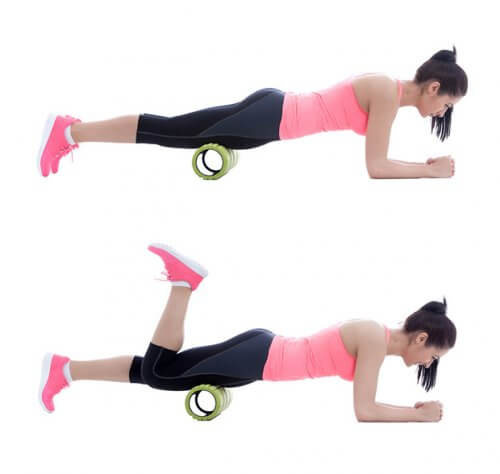
6. Hip Flexor Rollout
- Lie facedown on the roller, so it is just below your right hip.
- With your left leg out at a 90-degree angle, support your upper body on your forearms in front of you.
- Straightening your right leg behind you, take small back and forth/side to side movements as you roll.
- If you feel a trigger or pressure point, hold there for a few seconds before continuing on.
- Repeat on the other side.
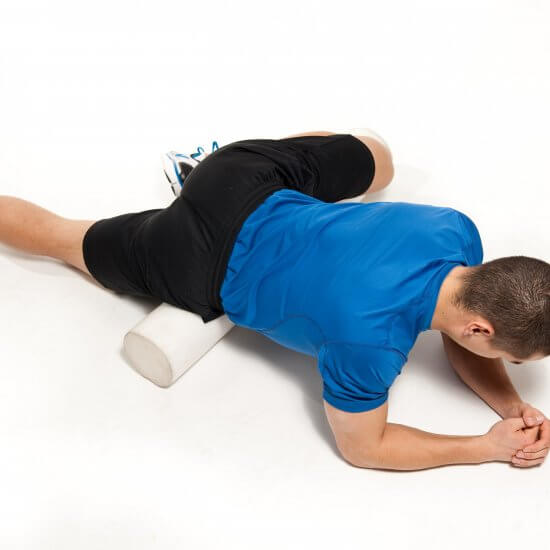
Other movements include low lunges, one-legged bridges, and a full range figure four.
Bear in mind that none of these should be done unless you have warmed up your body.
Sometimes when just starting out with stretches and yoga-type moves, using a yoga block can help prevent overextension into any stretches. They are a favorite tool of mine!
How Long Does It Take to Loosen Tight Hip Flexors?
If you have an injury, it could take anywhere from 1-6 weeks to heal. Minor injuries can often be taken care of in a week or two, with rest or other care forms. If your problem is tightness, not actual injury, you can start to feel better within a couple of weeks of diligent work on your problem areas.
The issue is that most runners start to get lazy about stretching, foam rolling, and all the other things that we know we should do.
Remember here that the key is diligence and consistency. If you go right back to the things you were doing before the pain or discomfort, you will likely end up at square one.
Is Walking Good for Tight Hip Flexors?
Interestingly enough, another common cause of hip flexor pain is being too sedentary. In this case, walking and other types of moderate exercise are great for tight hip flexors. If your pain is caused by running, walking could be a way to keep yourself from going crazy when sidelined by injury.
The best thing to do for yourself is to prevent getting into a situation where you have tight hip flexors. Just like anything, putting the time in before injury is the best way to go.
Stretching adequately, dynamic warmups, and keeping a steady date with your foam roller are just three small things you can do to keep your hips healthy and happy.
And isn’t that worth it?
Giving yourself a good hip flexor stretch regularly is one of the best ways guaranteed to release tight hips.
Latest Articles
 Is Running on a Treadmill Easier Than Running Outside?Runners have their own preferences, whether it is treadmill running, running outside on the road, or exploring trails. So...
Is Running on a Treadmill Easier Than Running Outside?Runners have their own preferences, whether it is treadmill running, running outside on the road, or exploring trails. So... Is It OK to Use Trail Running Shoes on the Road?While trail running shoes can be used on roads, especially in situations where a runner encounters mixed terrains or pref...
Is It OK to Use Trail Running Shoes on the Road?While trail running shoes can be used on roads, especially in situations where a runner encounters mixed terrains or pref... How to Fix Sore Quads After Running?Rest, ice, gentle stretching, and over-the-counter pain relievers can help soothe sore quads after running. Also, ensure ...
How to Fix Sore Quads After Running?Rest, ice, gentle stretching, and over-the-counter pain relievers can help soothe sore quads after running. Also, ensure ... 10 Fruits With The Most Electrolytes to Replace Sports DrinksThese fruits are high in electrolytes such as potassium, magnesium, and calcium, essential for hydration, muscle function...
10 Fruits With The Most Electrolytes to Replace Sports DrinksThese fruits are high in electrolytes such as potassium, magnesium, and calcium, essential for hydration, muscle function...

